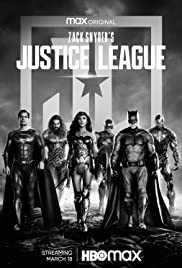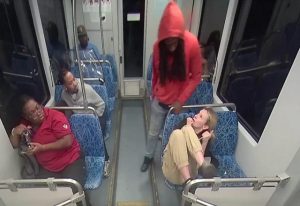Director Zach Snyder’s Vision Finally Acknowledged in Justice League
April 29, 2021
Zach Snyder’s Justice League, also known as the “Snyder Cut,” is a four hour extended cut of 2017’s Justice League. During the production of the original film, director Zach Snyder was forced to leave the film after suffering a family tragedy. Avengers director Joss Weadon was then brought on to finish production, where he led extensive reshoots and changed the tone of the film to be similar to something you’d see from Marvel. While Weadon is not credited, his impact on the movie did not go unnoticed, as fans were critical of the inconsistent tone between this movie and Snyder’s two previous DC films.
In the past year or so, Weadon has been accused of on-set abuse by multiple actors, most significantly Ray Fischer, who stars as Cyborg in Justice League. Fischer has been very public about his experiences, describing his character’s role and development in the film being greatly reduced by Weadon. In the last few days, a story has come out of Weadon threatening Gal Gadot on set and the power he had over how “stupid” he could make her look in the movie. Justice League has not aged well, with everything in mind about the treatment of its stars. Even before these allegations, there was a call from fans for Warner Bros. to “release the Snyder Cut” and see Zach Snyder’s vision for the film realized. Last year it was finally announced Snyder’s Justice League would hit HBO Max in 2021.
After watching Zach Snyder’s Justice League, the changes made by Weadon are very apparent. Like I mentioned before, the tone is very different. Snyder’s version is much darker both in tone and is literally not as colorful. There’s actually a black and white version of the Snyder Cut available along with the one in color. The movie is also presented in a 4:3 ratio, which is more fit for an imax screen. There’s a greater sense of dread which works well for this movie and actually fits the tone. For most of the movie, Superman is long gone and there’s very little hope for the heroes who are trying to live up to his legacy. This version comes with an R-rating. After all, this is Snyder’s interpretation of this world, which tends to be edgier and more violent.
The director has said he hasn’t seen the theatrical cut of the film and I can’t imagine how he would react watching it. Not only is it missing a lot of story and character development, the tonal shift is extreme. The story for the most part is the same: In the wake of Superman’s death, Steppenwolf has come to earth to collect the three mother boxes which will in turn destroy the world and our five heroes have to come together to stop him. There is just a lot more context given in the extra two hours. Those extra two hours in the Snyder Cut allow for a lot of needed breathing room. The first third can definitely drag for a bit and you do start to feel the runtime.
However around the 90 minute mark when Flash and Cyborg are introduced and the league starts to come together, the pace really picks up. I feel the extra length is for sure better utilized after this point. The first hour and a half is largely used for setup, which is necessary, but probably could’ve been cut down a bit. After this point we get deeper dives into the characters and they are dynamic as a group. Everyone is in a different place and has understandable reasons for wanting to fight or in some cases, staying out of everything.
Speaking of the characters, they probably benefit the most from Snyder’s version of the film, Cyborg especially. Not only was Fischer treated horribly during the reshoots headed by Wheadon, his character also suffered and was left very underdeveloped. Here, we finally get to see flashbacks to his past life before he was left mostly a machine. We see how he became who he is, more of his humanity, his pain and anger from the loss of his mother and his normal life, and what gives him strength to keep fighting. Batman is on a path to redemption here, which is made more clear in this cut.
In Batman v. Superman, he is broken and paranoid and full of rage. He even goes as far as killing his enemies without hesitation. Here we see him start to feel optimistic, trying to help others and his actions are done out of a sense of justice, not anger. While I have issues on Snyder’s take of Batman, after seeing his completed arc, I can appreciate it a bit more.
Snyder’s original plan was to direct the second and third instalment of Justice League, which would have seen a broken Superman turn evil and send the world into a chaotic nightmare version of itself. These plans were teased in Batman v. Superman with the “Nightmare Sequence,” which showed Batman in a dystopian future being captured and brutalized by Superman. Zach Snyder’s Justice League ends with another nightmare sequence, which in my mind acts as Snyder’s farewell to this universe and what could’ve come in future films if his partnership with DC continued.
We get a very fanservice interaction between Batman and Jared Letto’s Joker who have never interacted together on screen. For now, it looks like Warner Bros. is heading in a different direction with the DCEU, focusing on solo character films and not worrying about every film being part of an interconnected saga.
Zach Snyder’s Justice League itself is not an incredible movie, but its significant in its unusual length and the opportunity it has given Zach Snyder. It’s very enjoyable and I had a great time watching it, which I’m really surprised to be saying as someone who wasn’t a fan of Snyder’s previous DC films. It follows a classic comic book team-up movie plot which is carried by interesting and well-developed characters. Regardless of your thoughts on the theatrical version of the film, Snyder’s version is worth watching, especially if you’re a fan of DC or comic book movies in general.







